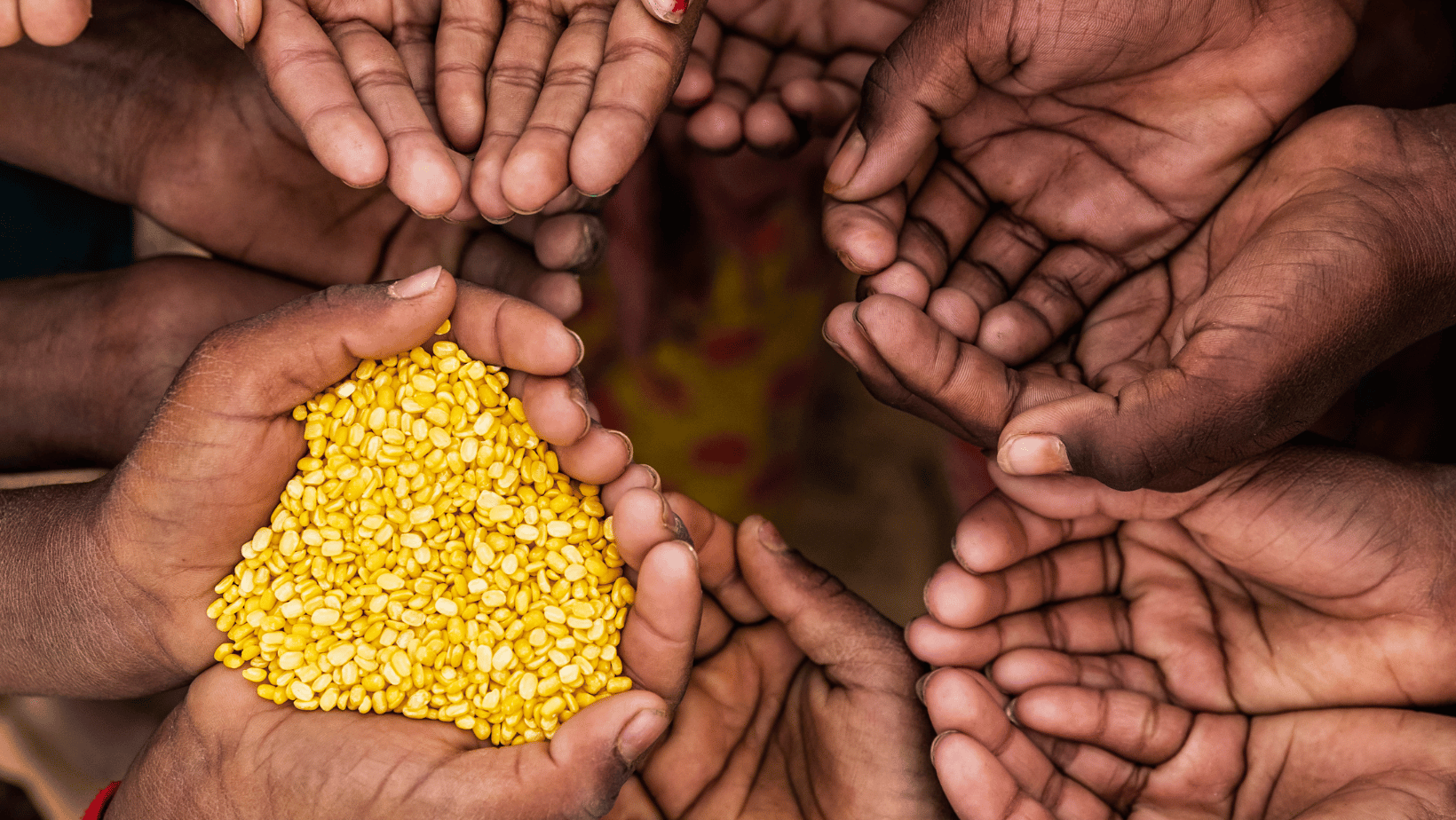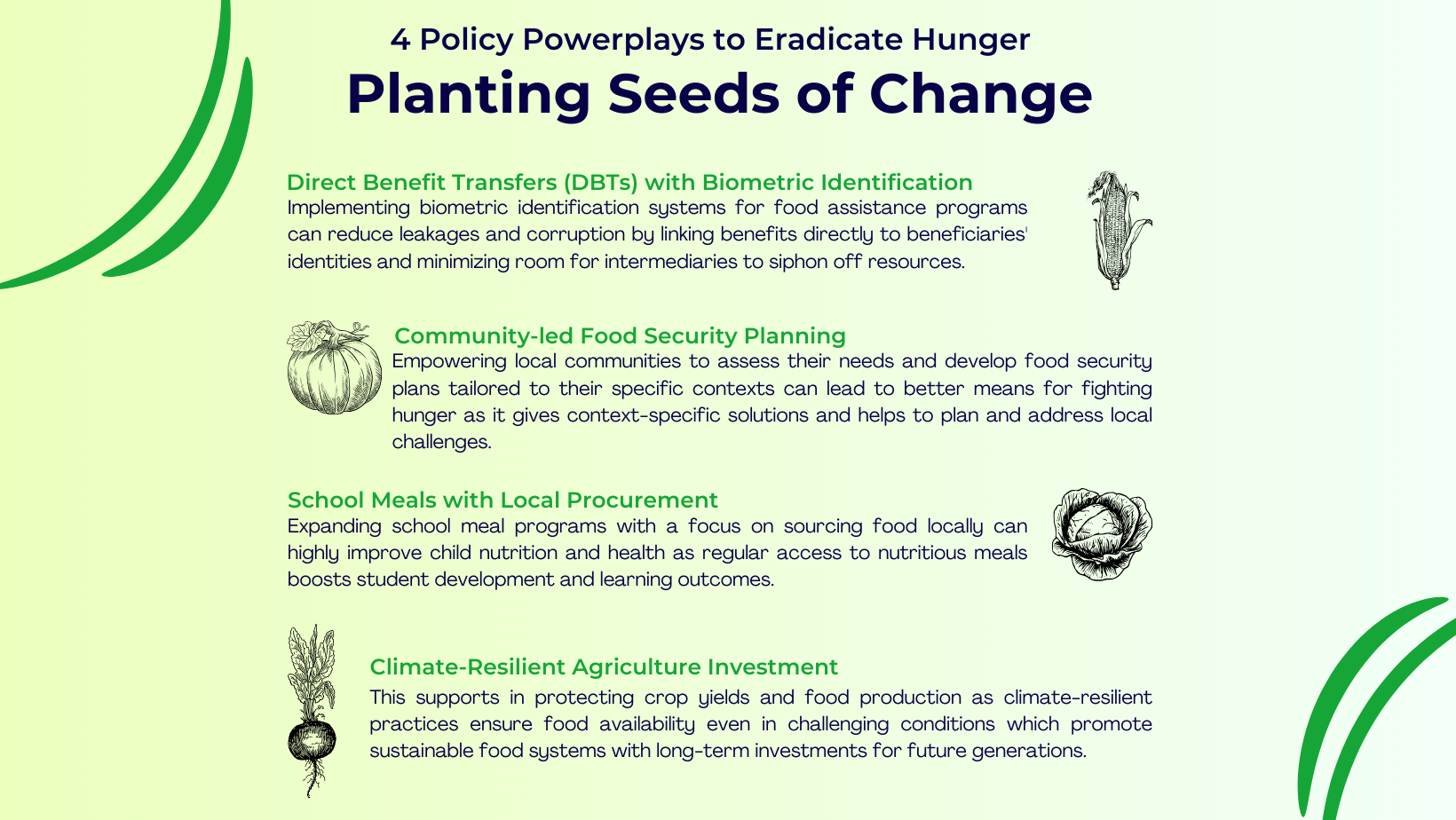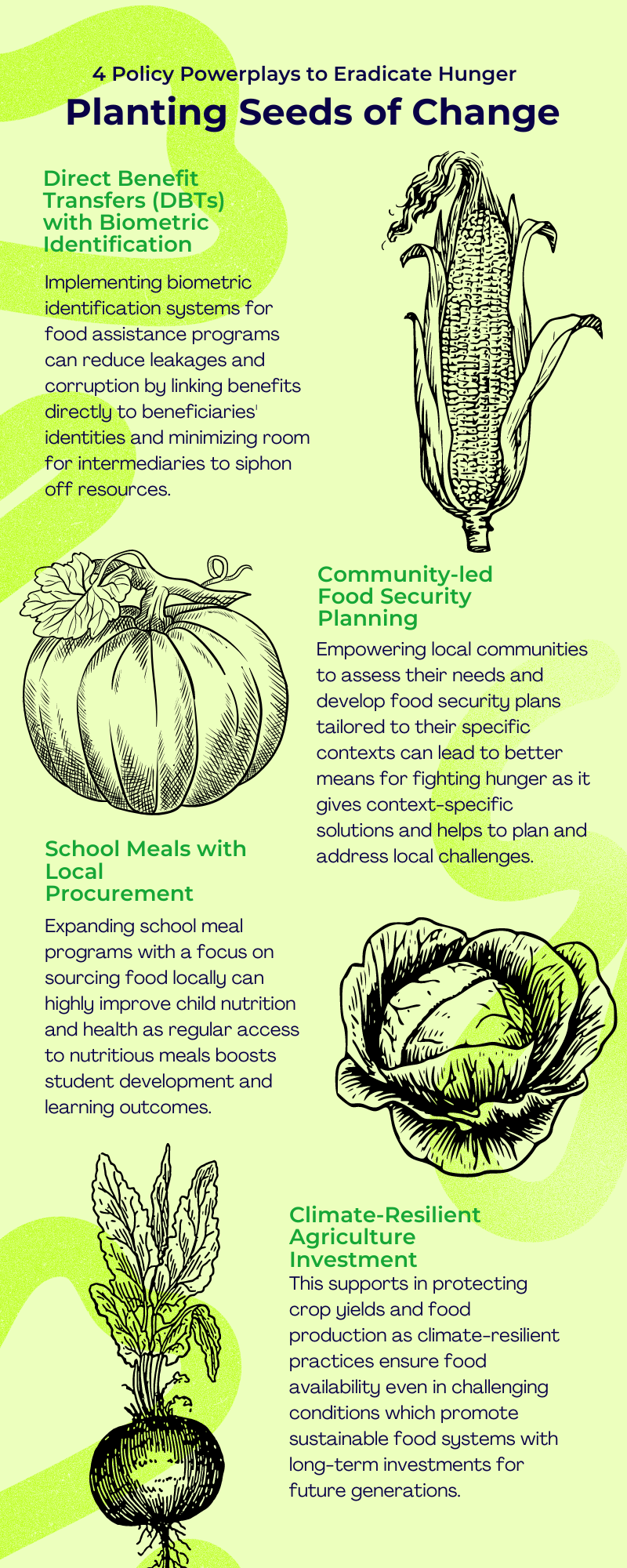
22 Mar Planting Seeds of Change: 4 Policy Powerplays to Eradicate Hunger in Emerging Economies
In a world of abundance, it is a shocking fact that around 9 million people die every year of hunger and hunger-related diseases. On a positive note, the number of people affected by hunger has decreased by 189 million since 1990. But there is still a long way to go in terms of abolishing hunger. Many countries have adopted some of the exemplary practices to fight hunger. Ultimately, the key to achieving zero hunger lies in implementing comprehensive, multi-pronged approaches that address the root causes of food insecurity, empower communities, and ensure long-term sustainability. Given below are some of the best practices adopted by emerging countries to fight hunger-
1. Direct Benefit Transfers (DBTs) with Biometric Identification:
India’s Aadhaar-linked DBTs for subsidies and social welfare programs has garnered attention for its implementation and effectiveness. Implementing biometric identification systems for food assistance programs can reduce leakages and corruption by linking benefits directly to beneficiaries’ identities and minimizing room for intermediaries to siphon off resources. It also increases transparency and accountability as real-time data on program reach and impact allows for better monitoring and evaluation of the practices. By leveraging this technology, authorities can ensure that resources are reaching the intended recipients efficiently, fostering a more accountable and transparent ecosystem for food assistance initiatives.
2. Community-led Food Security Planning:
Empowering local communities to assess their needs and formulate food security plans tailored to their unique contexts is a potent strategy in the fight against hunger. This approach provides context-specific solutions and aids in planning to address local challenges such as food availability, accessibility, and cultural preferences. It also assists in increased ownership and participation as communities take ownership of the solutions, promoting sustainable implementation for their own benefit. Furthermore, this community-driven approach enhances resource allocation efficiency. By directing resources toward areas with the greatest need and potential impact, it ensures that efforts are concentrated where they can make the most significant difference. In essence, empowering local communities in the fight against hunger not only leads to more effective solutions but also fosters a sense of ownership and sustainability in the long-term.
Community-based Food Security and Nutrition Program (CBN), Nepal emphasizes community participation and leadership. Local communities, with the support of trained facilitators, assess their food security vulnerabilities, identify priority needs, and design context-specific food security plans. As of 2020, the CBN covered over 3,000 communities across 45 districts in Nepal, benefiting over 1.5 million people. The Community-based Food Security and Nutrition Program (CBN) supports communities in developing and implementing food security plans tailored to their specific needs and resources.
3. School Meals with Local Procurement:
Expanding school meal programs with a focus on sourcing food locally can highly improve child nutrition and health as regular access to nutritious meals boosts student development and learning outcomes. It also supports local farmers with increased demand for locally produced food items and strengthens local food systems, creating economic opportunities. This initiative helps promote dietary diversity as locally sourced meals often incorporate diverse and nutritious crops, improving overall dietary quality of children. The Mid-Day Meal Scheme in India, which has successfully reached millions of schoolchildren, has resulted in development of education and food security. Not only does it provide nutritious meals, boosting student attendance and health, but it also sources ingredients locally through farmer produced organizations. The scheme, serving over 120 million children daily, stands as a exemplary effort in feeding hungry children and nourishing local economies.
4. Climate-Resilient Agriculture Investment
Investing in research and development of climate-resistant crops, drought-tolerant irrigation systems, and early warning systems for extreme weather events can help reduce vulnerability to climate shocks as the farmers are better equipped to withstand droughts, floods, and other climate-related disruptions. It also supports in protecting crop yields and food production as climate-resilient practices ensure food availability even in challenging conditions. This ultimately promote sustainable food systems with long-term investments for future generations. In Malawi The Adaptation Fund project supports smallholder farmers through climate-resilient practices like drought-resistant maize varieties and water harvesting techniques. Over 120,000 farmers have adopted the project practices, leading to a 25% increase in crop yields even during droughts. This leads to better food security for families, improved incomes, and enhanced resilience against climate shocks for Malawi’s communities.


From classrooms in India to drought-stricken fields in Malawi these innovative programs have helped empower communities, nurture local economies, and harness the power of technology to create solutions to fight hunger. Whether it’s serving up nutritious meals grown by local farmers or equipping households with climate-resilient tools, these initiatives help in the empowerment, resilience, and innovation and help envision a future where hunger is not just a statistic, but a distant memory.
Blog by Shreya Ghimire,
Research Analyst, Frost & Sullivan Institute
